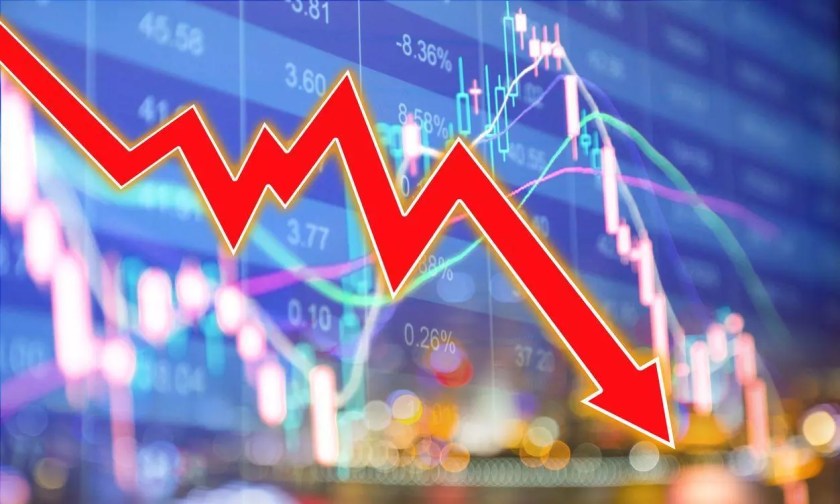Global Markets Plunge as Trump’s Tariffs Trigger Recession Fears; S&P 500 Loses $2.4 Trillion in Value
April 4, 2025 — Global stock markets suffered a massive sell-off on Thursday as renewed fears of a global recession gripped investors following U.S. President Donald Trump’s aggressive tariff announcement. Wall Street posted its worst single-day losses since 2020, with over $2.4 trillion wiped out from the S&P 500 companies alone.

Wall Street Crashes: Largest Decline in Nearly Five Years
The S&P 500 plummeted by 4.84% (−274.45 points) to close at 5,396.52, while the Dow Jones Industrial Average tumbled 3.98% (−1,679.39 points) to end at 40,545.93. The Nasdaq Composite suffered the most, diving 5.97% (−1,050.44 points) to close at 16,550.61, its steepest fall since the pandemic crash in March 2020.
The MSCI All Country World Index, a key gauge of global equities, also fell 3.41% to 807.64, marking its biggest daily drop since June 2022.
Tariffs Spark Global Trade War Fears
Markets reacted sharply to Trump’s announcement of a 10% blanket tariff on all U.S. imports, along with much steeper reciprocal tariffs on goods from over 40 countries. Analysts warn that this could escalate into a full-scale trade war, leading to a sharp contraction in global trade, inflationary shocks, and an economic slowdown.
The White House defended the move as part of a “reciprocal trade fairness” initiative, but investors dumped risk assets across the board, fearing a hit to corporate profits and global growth.
Tech Giants and Auto Stocks Take Heavy Hit
Technology and manufacturing stocks were among the hardest hit:
-
Apple: -9.2% (worst day in five years)
-
Amazon: -9%
-
Nvidia: -7.8%
-
Microsoft: -2.4%
-
AMD: -8.9%
-
Tesla: -5.47%
-
Ford Motors: -6.01%
Apple was particularly affected by fears of a 54% import tariff on Chinese-manufactured components, posing a major threat to its supply chain.
Bond Yields and Currency Movements Reflect Risk-Off Sentiment
The U.S. 10-year Treasury yield dropped 14.6 basis points to 4.049%, briefly touching 4.004%, its lowest level since November 2024. This marks its biggest one-day drop since August 2023, indicating a rush to safer assets.
The U.S. dollar fell sharply against major currencies:
-
Euro: +1.74% to $1.1037 (six-month high)
-
Japanese yen: +1.95% to ¥146.45
-
Swiss franc: +2.35% to 0.8608
Outlook: More Volatility Ahead?
Markets are now on edge, awaiting further policy details and possible retaliation from key trading partners like China, the EU, and Japan. Analysts caution that the fallout from tariffs, if sustained, could drag down global GDP, fuel inflation, and potentially trigger central bank interventions.
Investors are advised to remain cautious and expect heightened volatility in global equity and currency markets in the coming weeks.






















